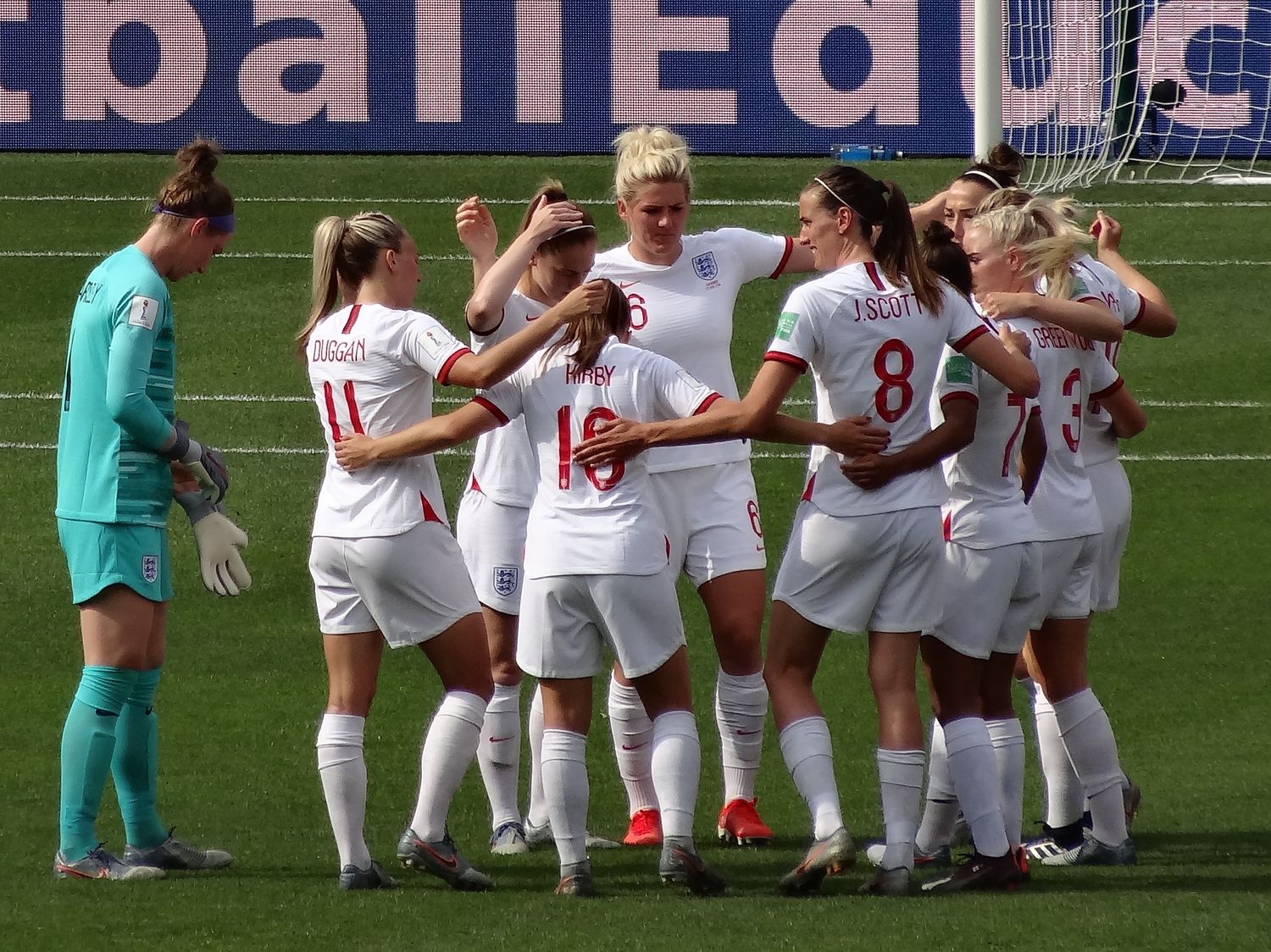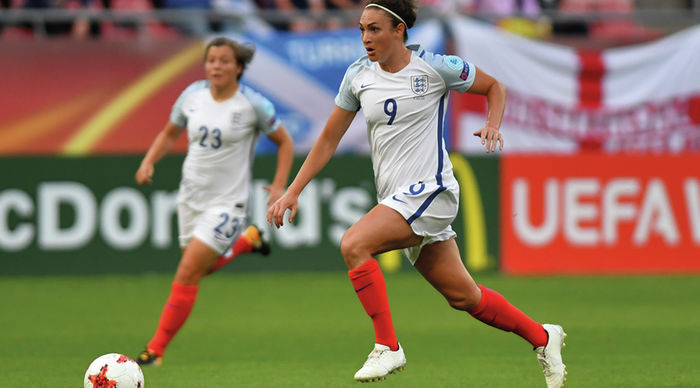Was Gabby Logan’s breathless assertion that this was only the beginning for women’s football in England, correct? Or was Chloe Kelly’s iconic celebration not the only 90s throwback in the English game?
“Women’s football has not only just arrived now - it has been hidden”
If this really is only the beginning for women’s football, we should all be very afraid. The first women’s football match actually took place in 1895, before in 1921. A group of old men at the FA, petrified of the popularity of women talking about things that make that establishment uncomfortable, banned women’s football. This was not lifted for a half-century. The Lionesses’ support for gender and sexual equality is hardly the same anti-establishment message that support for the unemployed was, for instance. Women’s football has not only just arrived now - it has been hidden.
You could be forgiven for thinking that women playing football was a late-twentieth century phenomenon, and that people actually watching it was confined to this tournament. The Euros was indeed a watershed for women’s football in England. All of England’s home matches were sold out. A peak of 17.4 million people watched the final on TV. Wembley was (whisper it) fuller for the women’s final than the men’s, despite the disappointing lack of flares up arses and mindless stampeding.
These stats are, of course, far higher than the equivalent ones for the Women’s Super League, England’s top domestic league. Is this surprising? No. Attendances and viewing figures are always higher for international tournament matches than for club matches. Are the figures disappointing? Yes. The average attendance in the WSL in the 2021/2022 season was 1600. This is ridiculously low and is higher than only Harrogate Town of all of England’s 92 professional clubs. This is music to the ears of the petty misogynist, keyboard warrior, and schoolboy windup merchant.
“The women’s game needs higher expectations and better opportunities from its clubs and governing bodies”
However, most WSL clubs play their home games in tiny stadiums. Chelsea’s Kingsmeadow seats 4850, Arsenal’s Meadow Park has a capacity 4500, and Man City’s Academy Stadium fits 7000. Although they are not filling the stadiums, the sheer fact of their small size, and (apart from City) out-of-town location reduces the number of fans women’s teams can attract. It’s not just the England team who can fill men’s stadiums. The North London Derby at the Tottenham Hotspur Stadium was attended by a WSL record crowd of 38262. The Manchester Derby at Old Trafford saw over 31000 supporters, whilst Spurs against Chelsea at Stamford Bridge had more than 24000.
People want to watch women’s football. WSL, Championship, and Women’s Premier League clubs need to play in bigger stadiums. The FA’s target of 6000 at WSL games by 2024 should be scrapped immediately. At risk of sounding like of a Conservative leadership candidate, the women’s game needs higher expectations and better opportunities from its clubs and governing bodies to progress.
Another important area for the game (and, misguidedly for Truss and Sunak) is education. Ian Wright is right; more girls need to play football at school. Just 63% of schools in England offer football in girls’ PE lessons, a figure which drops to 44% by the time that girls reach their most senior years at school. My school was great at encouraging girls to play football, and with two national titles, countless county cups, and trips to White Hart Lane, Wembley, and Pride Park, my friends and I certainly got the most out of school football. However, only a few of my club teammates played at school, usually for the lads’ team, with their school not bothering to enthuse enough girls in the sport.
Why should girls PE and after school sport be dominated by the same offering of Hockey and Netball? In 2019, 2.63 million women and girls played football at grassroots level in England, compared to 117000 hockey players and just 88400 netballers. It is a disservice to young girls up and down the country to continue to prevent them from emulating Toone, Russo, and co., whilst forcing them to hit a heavy ball with a huge stick and watch as much taller girls play catch above their heads.
“All female footballers and fans, from those who pay to play, to England’s Lionesses, deserve more”
School football is the pathway to long-term success for the English national team, but also for a stronger grassroots and lower league game. The FA promised to invest £230 million in this in March, primarily to improve grassroots facilities. A swathe of artificial pitches doesn’t automatically lead to a new generation of technical wizards à la Stanway, Walsh, and Kirby, but it will help girls to play better quality football in almost all weather.
The state of the elite game is also improving. At junior level, participation in the FA’s scheme for talented girls is widening. The replacement of 29 girls’ Regional Talent Centres with an initial 60 Emerging Talent Centres is a step in the right direction. Thousands more girls will be able to get better coaching and play for a better team locally. However, it does not go far enough. Many of the new centres are only for younger girls, which means that girls of 12 or 13 years old will still have to travel up to 90 minutes each way to training, and far further on a Saturday morning to matches.
This is not acceptable. I used to spend hours in the car with my parents on cold nights, traipsing from Hull to whatever godforsaken astroturf pitch in West Yorkshire we were training on that season. The girls’ game will not have progressed until girls across England can kick a ball (with excellent technique, of course) on a wet 3G within half an hour of their home. The FA must make sure girls can play at an elite level locally.
At a senior level, what attracts headlines (and comparisons to the men) is pay. It is lower. However, at the top the players are well paid. Leah Williamson, England’s captain, earns around £200,000 a year, whilst her England teammate Lucy Bronze has sponsorship deals with Pepsi and Visa. The average WSL salary is also higher than the UK average at £47,000. This is around a hundred times less than the average Premier League salary, so obviously represents the very worst of the gender pay gap.
However, salary size is part of the reason women’s football still feels less commercial and more special than the men’s game. It’s a throwback to 1921 and 1966, when footballers and spectators were more alike. I’m not suggesting such great disparity with the men is fair, but women’s football should not chase the sickeningly high salaries of the Premier League. The English game is beset by economic inequality. It would be more sustainable, and more in keeping with the spirit of the women’s game, to increase salaries at all levels; from the fourth tier up to international level.
All female footballers and fans, from those who pay to play, to England’s Lionesses, deserve more. And emulating the men’s game in every single way will hinder the long-term growth of our sport.


